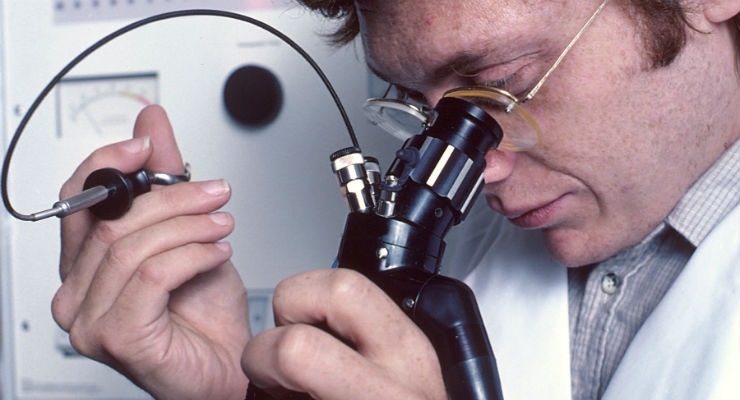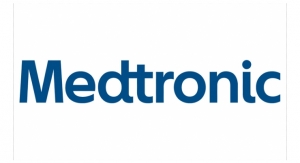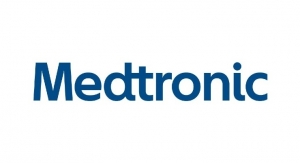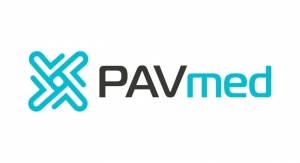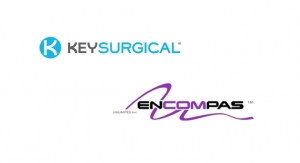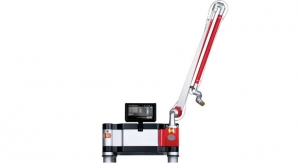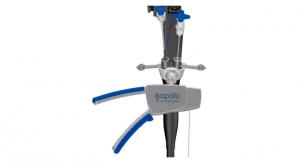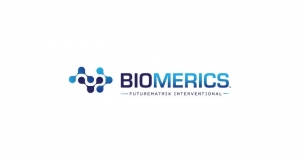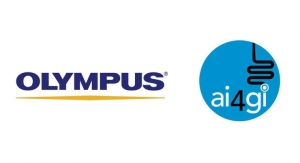Sunil Hebbalkar, Global Market Insights08.13.18
Once considered highly risky procedures, minimally invasive surgeries have now gained extreme popularity, fueling endoscopy market share. As this type of surgery delivers an excellent outcome by reducing injury to tissues, the use of endoscopy has increased lately across the medical domain. Considering the escalating acceptance of this non-surgical procedure across myriad hospitals, endoscopy industry giants have been steadfastly working toward advancing existing endoscopic systems. The frequent launch of technologically advanced minimally invasive surgical instruments, along with the development of numerous suturing procedures, is certain to propel endoscopy market trends over the years ahead.
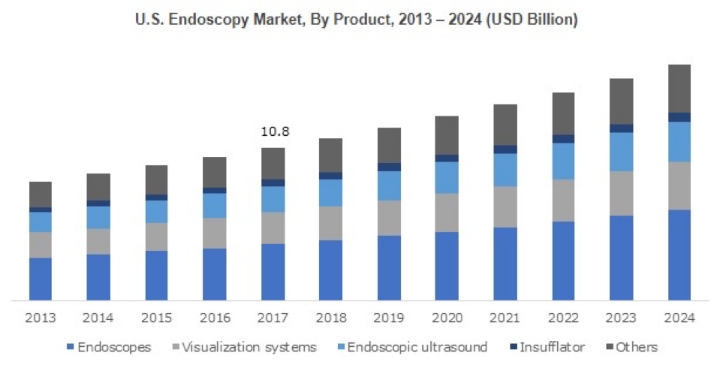
Endoscopies come with a slew of advantages, enabling doctors to perform any critical operation without the need for major surgery, while simultaneously facilitating a shorter period of recovery with lesser risk of complications. Taking into account the operational benefits of endoscopy, most of the research communities and leading healthcare facilities are now looking forward to brainstorming new techniques across this vertical. In fact, many healthcare service providers have even been joining hands to establish training centers, through which they plan to deploy minimally invasive endoscopy facilities across the globe on a large scale.
Validating the aforementioned fact: a Thailand-based medical facility provider, Samitivej Hospital, signed a deal with Sano Hospital, a Japanese healthcare facility specializing in endoscopy. Sano is renowned for its development of gastrointestinal endoscopy techniques, which could be extensively used for detecting cancerous tissues. Through this partnership, the two parties have introduced new gastrointestinal endoscopy techniques that can help in the removal early-stage tissues of esophageal, colorectal, and gastric cancers. Per statistics, colon cancer is one of the leading causes of deaths across the world. Reportedly, cases of colon cancer have been increasing over last few years, and it has become a significant influencing factor on the rise of mortality rates across Thailand.
Speaking along the same lines, this cooperation program will also prove to be quite beneficial for the Thai medical facility, considering the expertise Sano Hospital possesses with regards to endoscopy techniques. In addition, with the help of Sano’s latest innovation, Samitivej Hospital also plans to encourage its Liver and Digestive Institute to better serve the patients suffering from alcohol induced problems, colorectal cancers, fatty liver diseases, gallstones, and infections. The Samitivej-Sano agreement is an apt instance depicting the collaborative approach of numerous healthcare service providers and how they will serve to enhance the future prospects of endoscopy industry.
Arthroscopy is another application arena gaining renewed prominence in the endoscopy market as of late. The growing concern among specialists about the disadvantages of a traditional approach to diagnosing femoroacetabular impingement, labral tears, and other issues related to hip joints has been encouraging them to innovate next-gen instruments. Recognizing the significance of educating research scholars about the effective treatment of hip impingements, many U.S.-based medical centers and universities have included hip arthroscopy in their syllabus. This approach of medical education centers will help them treat rapidly increasing number of cases of hip impingements effectively, owing to the ample availability of trained professionals. The use of endoscopy in arthroscopy applications leads to the minimization of post-operative pain and other associated comorbidities. The post-treatment benefits of arthroscopy treatment in terms of recovery and comfort are certain to fuel U.S. endoscopy industry size.
The approach of leading endoscopy market giants and well-known research institutes toward product development and innovations will prove to be one of the revenue generating aspects for this vertical. As the requirement of products for diagnosing various kinds of terminal diseases increases, the deployment of minimally invasive surgical equipment will also observe an upsurge, generating lucrative opportunities for the players in the endoscopy industry. In addition, many hospitals specializing in endoscopy have been lately organizing training programs to educate doctors and nurses about newly invented technologies related to the field. With the rise in popularity of minimally invasive surgeries and the increasing number of R&D programs, the endoscopy market will register a CAGR of 6 percent over 2018-2024.
Sunil Hebbalkar, a post graduate mechanical design engineer by qualification, pens down articles pertaining to the market research industry. Having worked as an intern at the defense lab in the engine design and development department, he switched his professional genre after a year. Following his technical writing skills, he opted for a career in content development and now writes articles spanning automotive, healthcare, chemicals, and energy, among other industry verticals. Find out more about Global Market Insights here.

Endoscopies come with a slew of advantages, enabling doctors to perform any critical operation without the need for major surgery, while simultaneously facilitating a shorter period of recovery with lesser risk of complications. Taking into account the operational benefits of endoscopy, most of the research communities and leading healthcare facilities are now looking forward to brainstorming new techniques across this vertical. In fact, many healthcare service providers have even been joining hands to establish training centers, through which they plan to deploy minimally invasive endoscopy facilities across the globe on a large scale.
Validating the aforementioned fact: a Thailand-based medical facility provider, Samitivej Hospital, signed a deal with Sano Hospital, a Japanese healthcare facility specializing in endoscopy. Sano is renowned for its development of gastrointestinal endoscopy techniques, which could be extensively used for detecting cancerous tissues. Through this partnership, the two parties have introduced new gastrointestinal endoscopy techniques that can help in the removal early-stage tissues of esophageal, colorectal, and gastric cancers. Per statistics, colon cancer is one of the leading causes of deaths across the world. Reportedly, cases of colon cancer have been increasing over last few years, and it has become a significant influencing factor on the rise of mortality rates across Thailand.
Speaking along the same lines, this cooperation program will also prove to be quite beneficial for the Thai medical facility, considering the expertise Sano Hospital possesses with regards to endoscopy techniques. In addition, with the help of Sano’s latest innovation, Samitivej Hospital also plans to encourage its Liver and Digestive Institute to better serve the patients suffering from alcohol induced problems, colorectal cancers, fatty liver diseases, gallstones, and infections. The Samitivej-Sano agreement is an apt instance depicting the collaborative approach of numerous healthcare service providers and how they will serve to enhance the future prospects of endoscopy industry.
Arthroscopy is another application arena gaining renewed prominence in the endoscopy market as of late. The growing concern among specialists about the disadvantages of a traditional approach to diagnosing femoroacetabular impingement, labral tears, and other issues related to hip joints has been encouraging them to innovate next-gen instruments. Recognizing the significance of educating research scholars about the effective treatment of hip impingements, many U.S.-based medical centers and universities have included hip arthroscopy in their syllabus. This approach of medical education centers will help them treat rapidly increasing number of cases of hip impingements effectively, owing to the ample availability of trained professionals. The use of endoscopy in arthroscopy applications leads to the minimization of post-operative pain and other associated comorbidities. The post-treatment benefits of arthroscopy treatment in terms of recovery and comfort are certain to fuel U.S. endoscopy industry size.
The approach of leading endoscopy market giants and well-known research institutes toward product development and innovations will prove to be one of the revenue generating aspects for this vertical. As the requirement of products for diagnosing various kinds of terminal diseases increases, the deployment of minimally invasive surgical equipment will also observe an upsurge, generating lucrative opportunities for the players in the endoscopy industry. In addition, many hospitals specializing in endoscopy have been lately organizing training programs to educate doctors and nurses about newly invented technologies related to the field. With the rise in popularity of minimally invasive surgeries and the increasing number of R&D programs, the endoscopy market will register a CAGR of 6 percent over 2018-2024.
Sunil Hebbalkar, a post graduate mechanical design engineer by qualification, pens down articles pertaining to the market research industry. Having worked as an intern at the defense lab in the engine design and development department, he switched his professional genre after a year. Following his technical writing skills, he opted for a career in content development and now writes articles spanning automotive, healthcare, chemicals, and energy, among other industry verticals. Find out more about Global Market Insights here.

